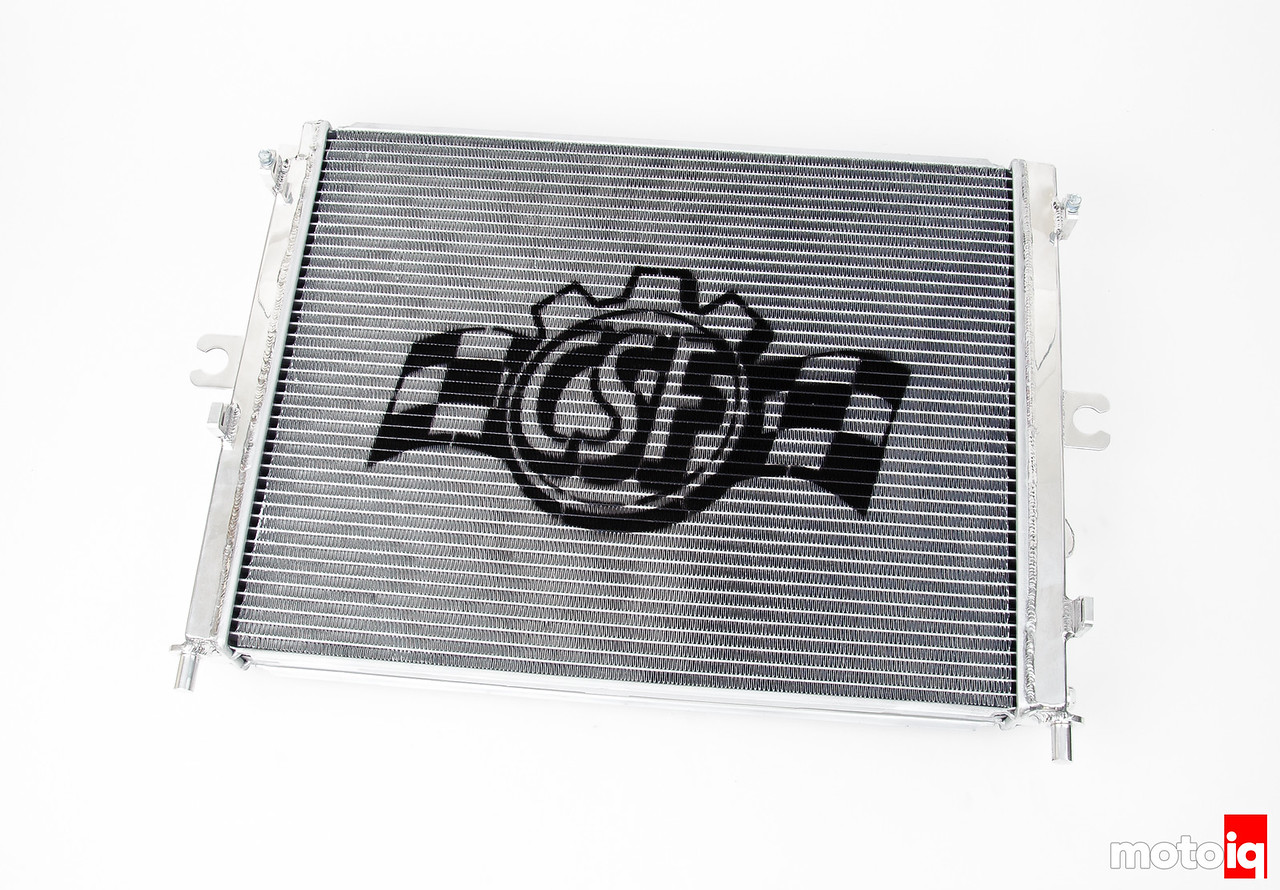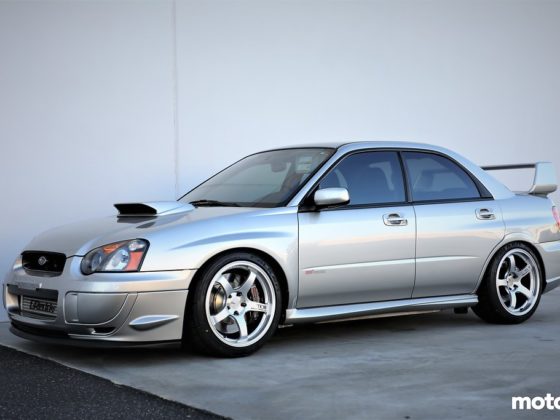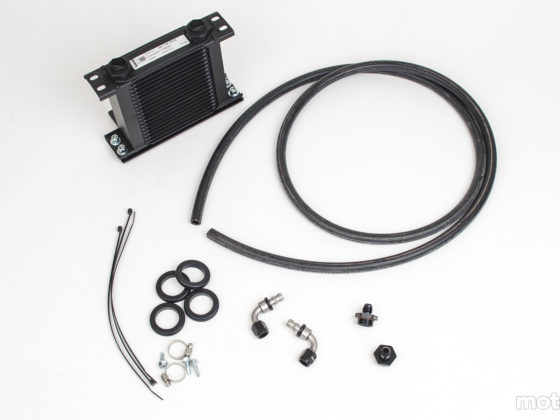
These tabs and the pegs and the bottom of the radiator go into the OEM rubber mounts on the core support. The bosses on the front of the radiator are for the AC condenser.

The internal construction of the CSF radiators core has some innovative features. One of these is the B-Fin tube. On a conventional radiator, there are rows of oval-shaped tubes. Factory radiators usually have two rows and aftermarket radiators have as many as 4. This gives more cooling area but the air has a problem penetrating the core and doing heat exchange. The CSF core has one big tube in a single row. CSF calls this their B tube. The B Tube starts off as a sheet of aluminum that is folded back onto itself to form a B shape to the desired width. After forming the seam of the tube is furnaced brazed to make it one piece and leak-free. The B-Tube gives the ideal ratio of fluid to air exposure with the center B piller giving strength and an additional conduction path for heat to follow from the fluid to the outside of the tube. The one-piece construction also makes it easy for air to penetrate the core, helping with heat exchange and cooling.

In-between the B fin tubes are these heat-conducting turbulators. These provide a path for heat out of the tubes to the airstream in radiators. Another innovation from CSF is that the turbulators are louvered. This helps improve airflow through the core and helps improve heat exchange efficiency. You can see the louvers here.

To install the radiator we first drained the coolant.

We then removed the upper radiator flow guide. This is the guide that directs air out of the radiator and out the top of the hood. This is part of the C7’s great aerodynamics.

A couple of bolts and it comes right out.




11 comments
It’s interesting that the radiator guide only needs to cover 1/3 of the radiator.
I can guess at a few of the factors that go into the consideration of this choice, but coming up with the idea of partial coverage is the stroke of genius. Deciding on how much to cover must be an interesting exercise too.
My opinion is that GM wanted to have some airflow through the engine compartment to keep the cats from cooking off stuff in there, so some air is vented out the hood, the rest flows through the engine compartment, keeps the cats cool and then exits out the fender vents.
And it also prevents any problems with driving or parking your car in heavy rain because the water does not touch any engine components.
Is the CSF a single pass radiator like the stock unit or double pass?
Single-pass.
random note, the oem auto Z06 rad is also 2″ thick… idk if it cools as well as the CSF tho
what temps were you guys hitting with the aux rad installed before switching to the CSF? You say C7’s hit 220-230 at the track, but nothing about specifically this car before and after…
also, limp mode is 260. at 230 they start pulling timing and reducing power.
We were hitting the same peak temp but on a cooler day like high 80’s low 90’s.
You provided pictures and instructions for installing the CSF Radiator. But you failed to provide information on how to order it and l have no idea on how much it may cost to obtain it.
You can follow the link to CSF Radiators at the end of the article.
How about the link to CSF’s web site?